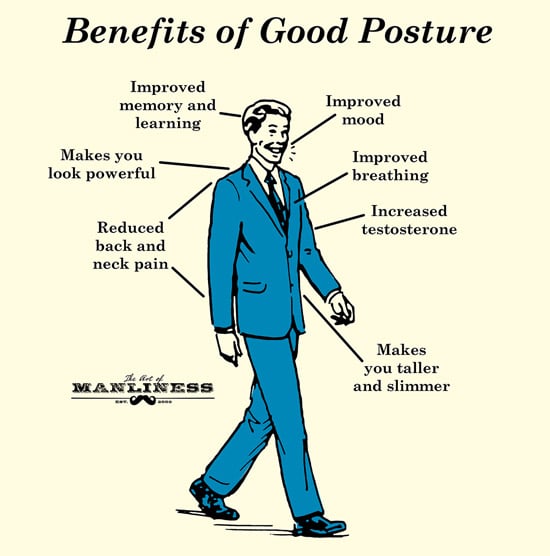Mexican Body Language
When it comes to understanding different cultures, one aspect that often gets overlooked is body language. It’s fascinating how gestures, facial expressions, and posture can communicate so much without uttering a single word. In this article, we’ll dive into the captivating world of Mexican body language.
In Mexico, body language plays a significant role in everyday interactions, enabling people to express their thoughts, emotions, and intentions in a subtle yet powerful way. Understanding Mexican body language can help you connect with locals on a deeper level and navigate social situations with ease.
So, get ready to uncover the rich tapestry of non-verbal communication in Mexico. From warm greetings to animated conversations, let’s explore the various gestures and expressions that make up the vibrant world of Mexican body language. Ready? Let’s dive in!
1. Hand Movements: Mexicans use hand gestures to add emphasis and convey emotions.
2. Eye Contact: Making direct eye contact shows respect and engagement.
3. Personal Space: Mexicans tend to have a smaller personal space bubble compared to other cultures.
4. Touch: Touching someone’s arm or shoulder is common, showing friendliness and connection.
5. Facial Expressions: Pay attention to smiles, frowns, and raised eyebrows, as they can indicate agreement, disagreement, or surprise.
Understanding and respecting Mexican body language can help you navigate cultural interactions confidently.

Mexican Body Language: Unspoken Expressions that Speak Volumes
Welcome to the colorful world of Mexican body language! From animated gestures to subtle facial expressions, Mexicans have a unique way of communicating nonverbally. In this article, we will delve into the fascinating world of Mexican body language and explore the meanings behind various gestures and signals. Join us on this cultural journey as we uncover the secrets of Mexican communication.
The Power of Eye Contact
In Mexican culture, eye contact plays a crucial role in social interactions. Direct eye contact is seen as a sign of respect and attentiveness. When engaging in a conversation, Mexicans maintain eye contact to show interest and engagement. A lack of eye contact can be interpreted as disinterest or rudeness. However, the intensity of eye contact may vary depending on the context. In formal settings, a prolonged gaze is considered respectful, while in informal situations, it may be seen as aggressive or confrontational.
In addition to direct eye contact, Mexicans also use their eyes to convey various emotions and messages. Raised eyebrows signify surprise or disbelief, while narrowing the eyes may indicate suspicion or distrust. Widened eyes can express excitement or astonishment, while fluttering eyelashes are often associated with flirtation or coyness. Understanding these subtle cues can help you better interpret the intentions and emotions conveyed through Mexican body language.
It’s important to note that cultural norms around eye contact may vary from person to person, and individual preferences should always be taken into consideration. When in doubt, observe and adapt to the communication style of your Mexican counterparts to establish rapport and avoid misunderstandings.
Hand Gestures: A Language of their Own
In Mexican culture, hand gestures are an integral part of communication. Mexicans are known for their expressive use of hands to complement their words and convey meaning. Understanding common hand gestures can enhance your ability to communicate effectively and navigate social interactions with ease.
One such gesture widely used in Mexico is the “manita” gesture, where the thumb and little finger are extended while the other fingers are closed. This gesture, often accompanied by a slight shake of the hand, is a way of expressing approval, agreement, or solidarity. It can be used in various contexts, from showing support during a conversation to celebrating a victory.
Another common hand gesture in Mexico is the “Madrina” gesture, where the hand is held at chest level with the palm facing up, as if offering something. This gesture is often used when requesting or offering assistance, hospitality, or a favor. It conveys a sense of willingness and openness to help, and is considered polite and respectful.
Body Language: Mirror or Mismatch?
Mexicans are known for their warm and friendly nature, which is reflected in their body language. When engaging in conversations, Mexicans often stand or sit close to each other, maintaining shorter distances than in some other cultures. This proximity signifies a sense of familiarity, trust, and camaraderie.
Physical touch is also common in Mexican body language, with hugs, kisses on the cheek, and handshakes being prevalent forms of greeting. Mexicans are generally comfortable with physical contact and may use it as a way to express warmth and affection. It’s essential to respect personal boundaries and observe the cues of your Mexican counterparts to ensure a comfortable and appropriate level of physical interaction.
However, it’s crucial to remember that body language can vary depending on the individual and the context. Some Mexicans may prefer a more reserved and formal demeanor, while others may exhibit more animated and expressive gestures. As with any cultural communication, paying attention to the specific context, social cues, and individual preferences will help you navigate Mexican body language with finesse.
Popular Mexican Hand Gestures: Decoding the Silent Language
Hand gestures are an integral part of communication in Mexico. Mexicans use their hands to complement their words, express emotions, and convey specific messages. Understanding popular Mexican hand gestures can help you better connect with locals and establish rapport. In this section, we will explore some of the most common hand gestures in Mexico and their meanings.
The “V” Sign: Peace or Insult?
The “V” sign, formed by extending the index and middle finger while keeping the other fingers folded, is a common hand gesture in many cultures. In Mexico, this gesture can have multiple interpretations depending on the context.
When the palm is facing inward and the fingers are pointed downwards, the “V” sign signifies peace and victory. Mexicans often use this gesture to celebrate success, express happiness, or show solidarity. However, it’s important to note that when the “V” sign is inverted, with the palm facing outward and the fingers pointed upwards, it can be seen as an offensive gesture resembling an impolite hand gesture in certain Western cultures. To avoid misunderstandings, it’s recommended to use the “V” sign with the palm inward.
Benefits of Understanding Mexican Body Language:
- Enhanced communication: Knowing the meaning behind Mexican body language helps you understand and respond appropriately to nonverbal cues, leading to better communication.
- Building rapport: By adapting to Mexican body language norms, you can establish rapport, foster positive relationships, and create a comfortable environment for interaction.
- Cultural appreciation: Learning about Mexican body language allows you to appreciate and respect the rich cultural heritage of Mexico, promoting cross-cultural understanding and harmony.
Etiquette Tips for Navigating Mexican Body Language
When interacting with Mexicans, understanding and respecting their body language is essential for effective communication. Here are some etiquette tips to keep in mind when navigating Mexican body language.
1. Maintain Eye Contact:
During conversations, maintain appropriate eye contact to demonstrate interest and respect. Avoiding eye contact may be perceived as a lack of engagement or disinterest.
2. Use Hand Gestures Sparingly:
While hand gestures are common in Mexico, it’s essential to use them sparingly and appropriately. Avoid excessive or exaggerated gestures that may come across as theatrical or insincere.
3. Adapt to Personal Space:
Mexicans generally stand or sit close to each other during conversations, reflecting a sense of familiarity and warmth. Respect personal space but be open to closer proximity if it feels comfortable to the other person.
4. Observe and Mirror:
Pay attention to the body language of your Mexican counterparts and mirror their gestures and level of physical contact. This can help establish a sense of connection and rapport.
5. Be Mindful of Touch:
Physical touch, such as hugs, kisses on the cheek, or handshakes, is common in Mexican greetings. Be mindful of individual comfort levels and follow their lead when initiating or reciprocating physical contact.
6. Respect Cultural Differences:
While it’s important to adapt to Mexican body language norms, be aware that individuals may have personal preferences or cultural variations. Respect these differences and adjust your communication style accordingly.
Wrap-Up:
Unlock the secret language of Mexican body language and enhance your cultural understanding. By understanding the power of eye contact, the meaning behind hand gestures, and the intricacies of Mexican body language, you can navigate social interactions with finesse and build meaningful connections. Remember, cultural sensitivity and adaptability are key to successful communication in any culture. So, let your body language speak volumes in the vibrant world of Mexican culture!
Key Takeaways – Mexican Body Language
- Mexicans use hand gestures extensively to communicate, such as pointing with the lips or kissing the fingertips to show admiration.
- Eye contact is important in Mexican culture as it shows respect and a genuine interest in the conversation.
- Mexicans often stand closer to each other while conversing, indicating a friendly and warm communication style.
- Touching during conversations, such as light touches on the arm or shoulder, signifies trust and closeness in Mexican body language.
- Mexicans use facial expressions to convey emotions, so paying attention to raised eyebrows or a wide smile can help you interpret their feelings.
Frequently Asked Questions
Welcome to our guide on Mexican body language! In this section, we’ll answer some common questions about the gestures, expressions, and nonverbal cues commonly used in Mexican culture. Understanding body language can help you navigate social interactions and communicate more effectively when interacting with Mexicans. Let’s dive into the questions!
1. How important is eye contact in Mexican culture?
In Mexican culture, eye contact is considered a positive and respectful gesture. When engaging in conversation or listening to someone, maintaining eye contact shows that you are paying attention and are interested in what the other person is saying. It also signifies honesty and sincerity. However, it is important to note that the level of eye contact can vary among individuals and different regions of Mexico.
While prolonged eye contact is generally encouraged, it is essential to be mindful and respect personal boundaries. Some Mexicans may feel uncomfortable with extended eye contact, particularly when it comes to authority figures or elders. It’s best to gauge the situation and adjust your level of eye contact accordingly.
2. What are common gestures used in Mexican body language?
Mexicans often use a variety of gestures to enhance their verbal communication. Some common gestures include using their hands to emphasize points while speaking, such as waving their hand in the air or tapping their fingers on a surface to express enthusiasm or urgency. Mexicans also frequently use their hands to greet others, often with a firm handshake or a warm hug.
In addition to hand gestures, Mexicans may also use facial expressions and body movements to convey meaning. For example, a slight nod of the head can indicate agreement or understanding, while a raised eyebrow might indicate surprise or skepticism. Paying attention to these gestures can provide valuable insights into the emotions and intentions behind a person’s words.
3. What does it mean when Mexicans touch their chest with their right hand?
One significant gesture in Mexican culture is touching the chest with the right hand. This gesture, known as the “corazon” gesture, is an affectionate way of expressing sincerity, gratitude, or respect. When someone touches their chest with their right hand while speaking with you, they are showing that they genuinely mean what they are saying from the heart.
The corazon gesture is often used when expressing emotions, apologizing, giving thanks, or making a heartfelt promise. It serves as a powerful nonverbal cue that establishes a connection and trust between the speaker and the listener. If you witness this gesture, it is a positive indication that the person is being genuine and sincere in their communication.
4. Is it common for Mexicans to stand close to each other during conversations?
Yes, it is common for Mexicans to stand in close proximity to each other when engaged in conversations. Mexicans generally have a smaller personal space bubble compared to some other cultures. Standing closer to someone during a conversation is seen as a sign of engagement, friendliness, and trust.
However, it’s essential to be aware of personal boundaries and respect individual comfort levels. Some individuals may prefer more personal space, particularly in formal or professional settings. If in doubt, it’s best to follow the lead of the person you are interacting with and adjust your physical proximity accordingly.
5. What should I keep in mind when interpreting Mexican facial expressions?
In Mexican culture, facial expressions are often more animated and expressive compared to some other cultures. Mexicans tend to use a wide range of facial expressions to convey emotions such as happiness, surprise, anger, or sadness. It’s important to take these nonverbal cues into consideration when interpreting the meaning behind someone’s words.
At the same time, it’s crucial to remember that facial expressions can be subjective, and individuals may have different ways of displaying their emotions. It is always best to consider the context of the situation, listen to the verbal message, and observe other nonverbal cues in conjunction with facial expressions to get a more accurate understanding of what someone is trying to convey.
Beginner’s guide to Mexican hand gestures
Summary
Mexican body language is an important part of their culture and communication style. Understanding their gestures and facial expressions can help you better connect and communicate with them. Eye contact, hand gestures, and physical touch are all significant aspects of Mexican body language.
Learning to make and maintain eye contact is crucial in Mexican culture, as it shows respect and interest. Hand gestures are also commonly used, such as waving, pointing, and thumbs up, to convey meaning. Mexicans are generally more comfortable with physical touch, like hugging and handshakes, so don’t be surprised by their warmth and affection.
By being aware of and respecting Mexican body language, you can enhance your communication and foster better relationships while appreciating their vibrant culture. So, next time you interact with someone from Mexico, pay attention to their non-verbal cues and connect on a deeper level.


